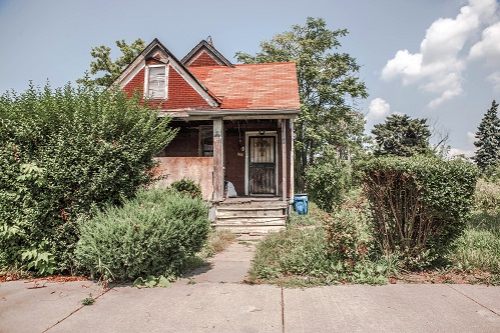Does home insurance cover roof replacement?
Your homeowners insurance policy covers roof replacement if the damage is from a covered peril and the roof cannot be repaired.
Your policy coverage and limits, as well as the reason the roof was damaged, determine if and how much your insurer will pay for a new roof.
“The primary way that a homeowner would have a roof replaced by insurance is to prove that their roof sustained damage by a wind or hail storm,” said Dorothy Cato with Skyway Insurance Services LLC. “And the date of the occurrence has to be specific, as insurance companies are able to access records and pinpoint exactly where storms producing wind and hail have occurred.”
In addition, you’ll have to pay a deductible, which is the amount you pay out of pocket before your insurance kicks in.
Your insurer will first look to repair the roof, replacing any damaged shingles rather than doing a complete replacement. However, insurance will cover complete replacement in a number of circumstances, including when the damage is too widespread, matching shingles aren’t available or the roof is older.
If you have an older roof, be sure you know how it’s covered; insurers sometimes offer actual cash value coverage only on roofs over a certain age, which means your out-of-pocket will be higher.
How to get insurance to pay for roof replacement
Your insurer has a detailed claims process that must be met to cover a roof replacement. Following the steps closely will ensure your claim is paid and you receive a new roof quickly. Contact your insurer immediately upon discovering roof damage to initiate the claims process.
Steps to follow for a roof replacement include:
- Review your insurance policy. Your insurance policy details how your roof is covered, the coverage limits, and the deductible amount. Understanding your policy will help you navigate the claims process and set accurate expectations.
- Document the damage. If possible, take pictures of the roof (from a distance; never climb on a damaged roof) and inside your home. It’s essential to include as much detail as possible so that your insurer can accurately assess the scope of the damage. Documenting other storm damage also gives weight to your roof claim.
- Schedule a roof inspection. It is crucial to work with a reputable roofing company. Their inspection and estimate will provide a reliable assessment of the damage, giving you confidence in the accuracy of your claim.
- File the insurance claim. Your insurer will tell you the exact process for filing a home insurance claim with them. Meet deadlines and provide all necessary documentation to ensure the claims process proceeds smoothly.
- Meet the adjuster. Your insurer will send an adjuster to examine the roof damage and work with the roofing company to repair or replace your roof. The adjuster will determine how your coverage applies and issue an initial settlement check.
- Get the roof replaced. The insurance company will issue a final check to cover the full cost when the work is done.
When does home insurance cover roof replacement?
Your insurance policy only covers specific types of roof damage. Weather-related events like wind or fire, lightning, hail or falling debris like trees are typically covered by your homeowners policy. However, normal wear and tear, animal damage and poor maintenance are not covered by your policy.
Additionally, the type and scope of the damage determine if your insurer will repair or replace the roof. For example, if you have a small area of hail damage on a roof in otherwise good condition, your insurer may choose only to repair the damaged area. However, insurance may cover a full replacement if you have more significant damage or an older roof.
How does roof replacement work with insurance?
Depending on where you live, your insurer will have to replace your roofing materials with similar or an exact match.
In some states, your insurer can repair or replace your roof with materials of a like kind and quality if the original material is no longer available. For example, if your shingles are discontinued, the insurer has to pay for shingles of a similar type and color. Additionally, you can’t demand a metal roof to replace shingles, as they are different materials.
However, some states require roofing materials to match exactly. So, if a portion of your roof is damaged but your shingles are no longer available, the insurer may have to replace your entire roof to match.
You can pay out of pocket for upgrades to your roof if you so choose.
How much does insurance pay for roof replacement?
The amount your insurer pays for a roof replacement depends on your coverage limits and policy specifications. The dwelling coverage portion of your homeowners insurance policy covers roof damage.
Your coverage limit should be high enough to repair or replace your home if it is severely damaged. For example, if your dwelling coverage limit is $300,000 and it costs $50,000 to repair your roof, insurance will cover the costs, minus the deductible. Since standard home insurance policies offer replacement cost, you should have more than enough coverage to replace the roof.
That said, insurance companies use something called the 80% rule to handle claims. In short, that rule states that your home must be insured for at least 80% of its replacement cost value for a claim to be paid in full. So, if you don’t carry at least 80% of your home’s replacement cost, your claim payout could be reduced.
However, if your policy only covers the actual cash value (ACV) of your roof, your insurer factors in depreciation before paying for the replacement. So, if your roof is 10 years old, the insurer calculates the depreciation into the amount it will pay for a new roof. You may also be required to pay the difference, in addition to your deductible.
What to do if your roof claim is denied
Most insurers have a specific process that must be followed to prevent a claim from being denied. Speak with an agent to ensure you understand your policy and the claims process, and provide all requested documentation promptly.
However, you have options if your insurer denies a roof claim:
- First, make sure you understand precisely why your insurer denied the claim
- Compare the denial reason with your policy to see if it holds up to the contract
- Appeal the decision following your insurance company’s procedures. Be sure to give a detailed description of how your policy applies.
- If your appeal is denied, you can contact your state’s department of insurance or seek help from a public adjuster or a lawyer.
FAQ
Will homeowners insurance cover a new roof?
Yes, homeowners insurance will pay for a new roof if the claim meets the coverage requirements and terms of the policy. The damage must be caused by a covered peril and limits will be determined by your policy terms.
Does insurance pay for a full roof replacement?
If covered by your policy, insurance will pay for a full roof replacement. However, insurance won’t completely replace your roof if it can be repaired.
How do roofing companies work with insurance companies?
A roofing company will work with your insurer to resolve your claim quickly. They can provide an inspection, estimate and communicate directly with the insurance company to repair or replace your roof.






